| III Corps | |
|---|---|
| Country | North Korea |
| Branch | Army |
| Type | infantry |
| Part of | Korean People's Army |
| Garrison/HQ | Nampo, South Pyongan [1] |
The III Corps is a corps of the Korean People's Army. It was created just before the North Korean invasion of 1950 with Lt. General Yu Kyong-su in command. During the initial North Korean invasion of the south, it was in reserve, comprising the 10th Infantry Division (organised April 1950), the 13th Division (organised March 1950), and the 15th Infantry Division (organised March 1950). [2]
For the First and Second Battles of Wonju, it was planned that the corps would act as casualty replacement pool for the KPA II and V Corps. [3] But like the South Koreans they were facing, the North Korean forces were also badly depleted and understrength. [3] Although the North Koreans fielded more than 10 infantry divisions for the battle, [4] most of the divisions' strength were equivalent to an infantry regiment. [3]
By the time of the Korean Armistice of July 1953, the corps was one of only two KPA corps on the line, holding the extreme eastern sector, with VIII Corps and the Chinese 60th Army on the western flank. By that time it consisted of the 1st, 15th, 37th, and 45th Divisions. [5]
In July 1951, the corps consisted of: [5]
Joseph S. Bermudez reports that the corps is part of the KPA's third echelon and is deployed on the western coast of North Korea, around the Pyongyang area (surrounding the area of responsibility of the Pyongyang Defense Command. He reports that as a rear corps it would contain two to five infantry divisions, a tank brigade, as well as artillery and other units. [6]

The Battle of the Pusan Perimeter, known in Korean as the Battle of the Naktong River Defense Line, was a large-scale battle between United Nations Command (UN) and North Korean forces lasting from August 4 to September 18, 1950. It was one of the first major engagements of the Korean War. An army of 140,000 UN troops, having been pushed south to the brink of defeat, were rallied to make a final stand against the invading Korean People's Army (KPA), 98,000 men strong.
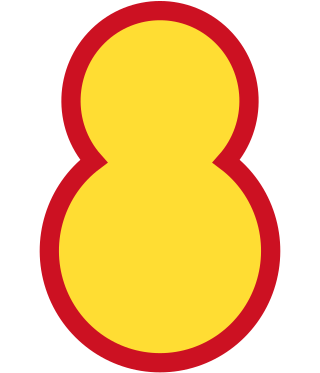
The 8th Maneuver Division, also known as Roly Poly Toy Division, is a military formation of the Republic of Korea Army and is unit is one of four divisions under the command of the VII Maneuver Corps. Before the unit was renamed on January 1, 2021, it was called the 8th Mechanized Infantry Division.
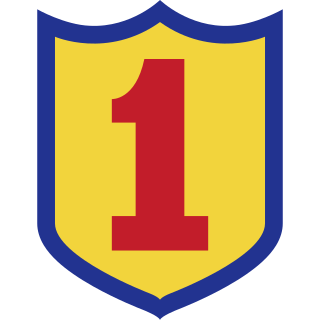
The 1st Infantry Division is a military formation of the Republic of Korea Army's I Corps. The division was established on 1947 under the command of Colonel Kim Suk-won.

The 6th Infantry Division is a military formation of the Republic of Korea Army.
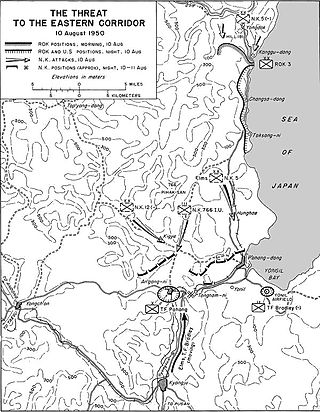
The 766th Independent Infantry Regiment was an elite light infantry unit of North Korea's Korean People's Army (KPA) that existed briefly during the Korean War. It was headquartered in Hoeryong, North Korea, and was also known as the 766th Unit. Trained extensively in amphibious warfare and unconventional warfare, the 766th Regiment was considered a commando unit. The regiment was trained to conduct assaults by sea and then to lead other North Korean units on offensive operations, to infiltrate behind enemy lines, and to disrupt enemy supplies and communications.
The 27th Infantry Division was a military formation of the Korean People's Army, as part of the II Corps.
The II Corps is a corps of the Korean People's Army. It was created on June 12, 1950 with Lt. General Kim Kwang-hyop in command. During the Korean War the unit was composed of the 2nd Infantry Division, the 5th Infantry Division, and the 12th Infantry Division.
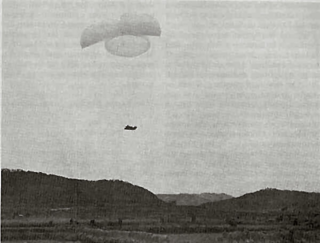
The Battle of Yongyu, also known as the Battle of the Apple Orchard or the Battle of Yongju by the Australians who fought in it, took place between 21 and 22 October 1950 during the United Nations Command (UNC) offensive into North Korea against the Korean People's Army (KPA) that had invaded South Korea during the Korean War. The battle was fought between the 3rd Battalion, Royal Australian Regiment of the 27th British Commonwealth Brigade and the KPA 239th Regiment.

The Battle of Onjong, also known as the Battle of Wenjing, was one of the first engagements between Chinese and South Korean forces during the Korean War. It took place around Onjong in present-day North Korea from 25 to 29 October 1950. As the main focus of the Chinese First Phase Offensive, the People's Volunteer Army (PVA) 40th Corps conducted a series of ambushes against the Republic of Korea Army (ROK) II Corps, effectively destroying the right flank of the United States Eighth Army while stopping the UN advance north toward the Yalu River.

The Battle of the Ch'ongch'on River, also known as the Battle of the Ch'ongch'on, was a decisive battle in the Korean War that took place from November 25 to December 2, 1950, along the Ch'ongch'on River Valley in the northwestern part of North Korea. In response to the successful Chinese First Phase Campaign against the United Nations (UN) forces, General Douglas MacArthur launched the Home-by-Christmas Offensive to expel the Chinese forces from Korea and to end the war. Anticipating this reaction, the Chinese People's Volunteer Army (PVA) Commander Peng Dehuai planned a counteroffensive, dubbed the "Second Phase Campaign", against the advancing UN forces.
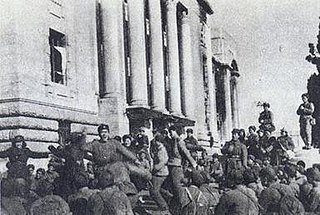
The Third Battle of Seoul was a battle of the Korean War, which took place from December 31, 1950, to January 7, 1951, around the South Korean capital of Seoul. It is also known as the Chinese New Year's Offensive, the January–Fourth Retreat or the Third Phase Campaign Western Sector.

In the Battle of the Bowling Alley , United Nations Command (UN) forces defeated North Korean forces early in the Korean War near the city of Taegu, South Korea. The battle took place in a narrow valley, dubbed the "Bowling Alley", which was north of Taegu. It followed a week of fighting between the Korean People's Army (KPA) 13th Division and the Republic of Korea Army's (ROK) 1st Division along the latter's last defensible line in the hills north of the city. Reinforcements, including the US Army's 27th and 23rd Infantry Regiments were committed to bolster the ROK defenses. This battle and several others were smaller engagements of the Battle of Pusan Perimeter.

The First and Second Battles of Wonju, also known as the Wonju Campaign or the Third Phase Campaign Eastern Sector, was a series of engagements between North Korean and United Nations (UN) forces during the Korean War. The battle took place from December 31, 1950, to January 20, 1951, around the South Korean town of Wonju. In coordination with the Chinese capture of Seoul on the western front, the North Korean Korean People's Army (KPA) attempted to capture Wonju in an effort to destabilize the UN defenses along the central and the eastern fronts.

The Battle of Sangju was an engagement between the United Nations and North Korean forces, occurring on July 20–31, 1950, in the village of Sangju in southern South Korea, early in the Korean War. It ended in a victory for the North Korean forces after they were able to push troops of the United States and South Korea out of the area.
The Battle of Hwanggan was an engagement between United States and North Korean forces that took place on July 23–29, 1950, on a road north of the village of Hwanggan in southern South Korea, early in the Korean War. The battle ended in a victory for the North Koreans after US troops were forced to withdraw south.

The Battle of Nam River was an engagement between the United Nations Command (UN) and North Korean forces early in the Korean War from August 31 to September 19, 1950, in the vicinity of the Nam River and the Naktong River in South Korea. It was a part of the Battle of Pusan Perimeter, and was one of several large engagements fought simultaneously. The battle ended in a victory for the United Nations after United States Army (US) troops repelled a Korean People's Army (KPA). attack across the river.

The Great Naktong Offensive was a North Korean military offensive against United Nations Command (UN) forces early in the Korean War, taking place from September 1–15, 1950. It was the North Korean Korean People's Army (KPA)'s unsuccessful final bid to break the Pusan Perimeter established by the UN forces.

The Battle of Kyongju was an engagement between United Nations Command (UN) and North Korean forces early in the Korean War from August 31 to September 15, 1950, in the vicinity of Kyongju in South Korea. It was a part of the Battle of Pusan Perimeter, and was one of several large engagements fought simultaneously. The battle ended in a victory for the UN after large numbers of United States Army (US) and Republic of Korea Army (ROK) troops repelled a strong North Korean Korean People's Army (KPA) attack.
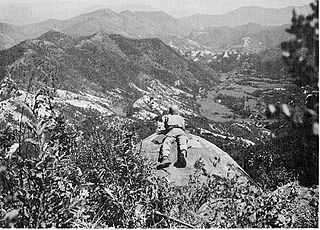
The Battle of Tabu-dong was an engagement between United Nations Command (UN) and North Korean forces early in the Korean War from September 1 to September 15, 1950, in the vicinity of Tabu-dong, Chilgok County, north of Taegu in South Korea. It was a part of the Battle of Pusan Perimeter, and was one of several large engagements fought simultaneously. The battle ended in a victory for the UN after large numbers of United States Army (US) and Republic of Korea Army (ROK) troops repelled a strong Korean People's Army (KPA) attack.
The Bloody Gulch massacre was a war crime that took place in the Korean War on August 12, 1950, in "Bloody Gulch", west of Masan, South Korea. After a successful attack on two US artillery battalions that killed or injured hundreds of US soldiers, North Korea's Korean People's Army (KPA) 13th Regiment then killed 75 US Army prisoners of war. Otherwise this was one of the smaller engagements of the Battle of Pusan Perimeter. The 75 soldiers were from the 555th Field Artillery Battalion of the US 24th Infantry Division and the 90th Field Artillery Battalion of the US 25th Infantry Division.